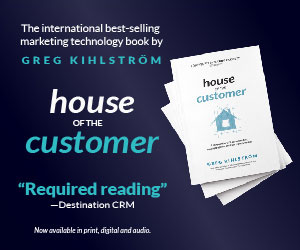A company has many responsibilities to a variety of stakeholders. In addition to its customers and employees (including leadership), there are board members, shareholders, partners, the public at large, and potentially many other niche audiences. While some of these responsibilities are financial, and others may be to uphold a level of service, there is yet another category that is increasingly discussed, and important to the long-term success of an organization.
The brand of today and tomorrow must be an Agile one, nimble enough to adapt to fast-changing environments, and rooted in continually improving the people, processes, and systems that comprise it. In this article, I’m going to talk about the the responsibilities of the Agile, modern brand that go beyond financial and customer service ones.
Customers
Let’s start with that critical external audience: customers. While a brand is responsible to deliver a great product or service, both initially and well after the sale, we’re not here to talk about that. Instead, an Agile brand has a responsibility to provide the best possible experience before, during, and after the sale.
A good experience is not a “nice to have” feature, anymore, either. According to Salesforce, 88% of customers believe personalized experiences are as important as a brand’s products/services. If you think about that for a minute that is …
Thus, an Agile brand has a responsibility to its customers to provide a rewarding experience that matches or surpasses the quality of its products and services. Customers increasingly expect this and they vote with their wallets when it comes to choosing which brands provide the best experience.
Additionally, it’s not solely about experience, the modern brand also has a responsibility to its audiences—customers chief among them—to express and make clear its values. Note that this doesn’t mean a brand’s values has to match any one group of individuals or majority, but there is a growing responsibility that brand makes it clear what it stands for, and its code of ethics. We saw an increased focus on this with the influx of the Millennial generation into both the workforce and increased buying power as consumers but take note that this is not something that is simply relegated to a single generation.
Employees
While they are sometimes not treated as such, the next audience can be as important or even more important than the first. The employee experience has run into challenges due to rapid and rather massive shifts in the employment numbers as well as the pandemic and its impact on in-person, remote, and hybrid work. The modern, Agile brand has a responsibility to its employees to provide them with clarity, respect, and consistency in what the expectations are in regard to what their employee experience should consist of. Unfortunately, there is no one-size-fits-all approach here.
Also, like my comments above about brands’ commitment to articulating and sharing their values with customers, employees also want to work somewhere that aligns with their values. With growing DEI programs as well as ESG efforts, brands are responding here, but there is often work to be done to pay more than lip service to these efforts. Employees and customers alike are continuing to grow move savvy in their efforts to tell when efforts to establish values are simply words, not actions.
To underscore this, a brand’s ethics, as well as its commitment to diversity and inclusion makes for a stronger company overall. This is the win-win component of it: greater diversity and inclusion of ideas, viewpoints, and people leads to better strategies, more creativity, and a more sustainable organization.
Thus, an Agile brand has a responsibility to its employees to provide a great experience, plus the opportunity for everyone to be part of the ideas and growth of the organization.
Partners and Vendors
Similar to how both customers and employees are treated, partners and vendors should also receive a good experience and be treated ethically as well. After all, with some of the procsses and systems that create increased interchangeability that customers benefit from, comes the ability for partners and vendors to choose who they partner with more easily as well. Additionally, diversity should be sought when seeking partnerships and vendor relationships for similar reasons as those for employees: that more diverse ideas and perspectives bring better results.
Thus, an Agile brand has a responsibility to its partners and vendors to create ethical and sustainable relationships while promoting diversity.
The world at large and the future
Does a brand owe anything to those who aren’t stakeholders, customers, or employees? I would argue that yes, it absolutely does. A company’s responsibility to the world at large can vary, depending on what exactly impact it has on energy, the environment, privacy, quality of life, and countless other factors. While I won’t get specific here due to the wide range of potential impacts, suffice to say a brand should be thinking about its reputation and impact beyond its immediate stakeholders like customers, employees, and shareholders.
So, what about a brand’s responsibility beyond the current point in time, and maybe the immediate future? A brand should lay a foundation for the future. This means taking a long-term view of its customers, employees, and the world at large.
Thus an Agile brand has a responsibility to the future to make the world in a better place in the ways that it can influence and improve it.
As you can see, creating and sustaining and Agile Brand includes a multitude of considerations, including the responsibility of the brand to live up to its values and ethics, as well as to invest in the sustainability of the organization itself and the world at large.
Original Source:
The Agile Brand Blog – Greg Kihlström Customer Experience & Digital Transformation
Original URL:









